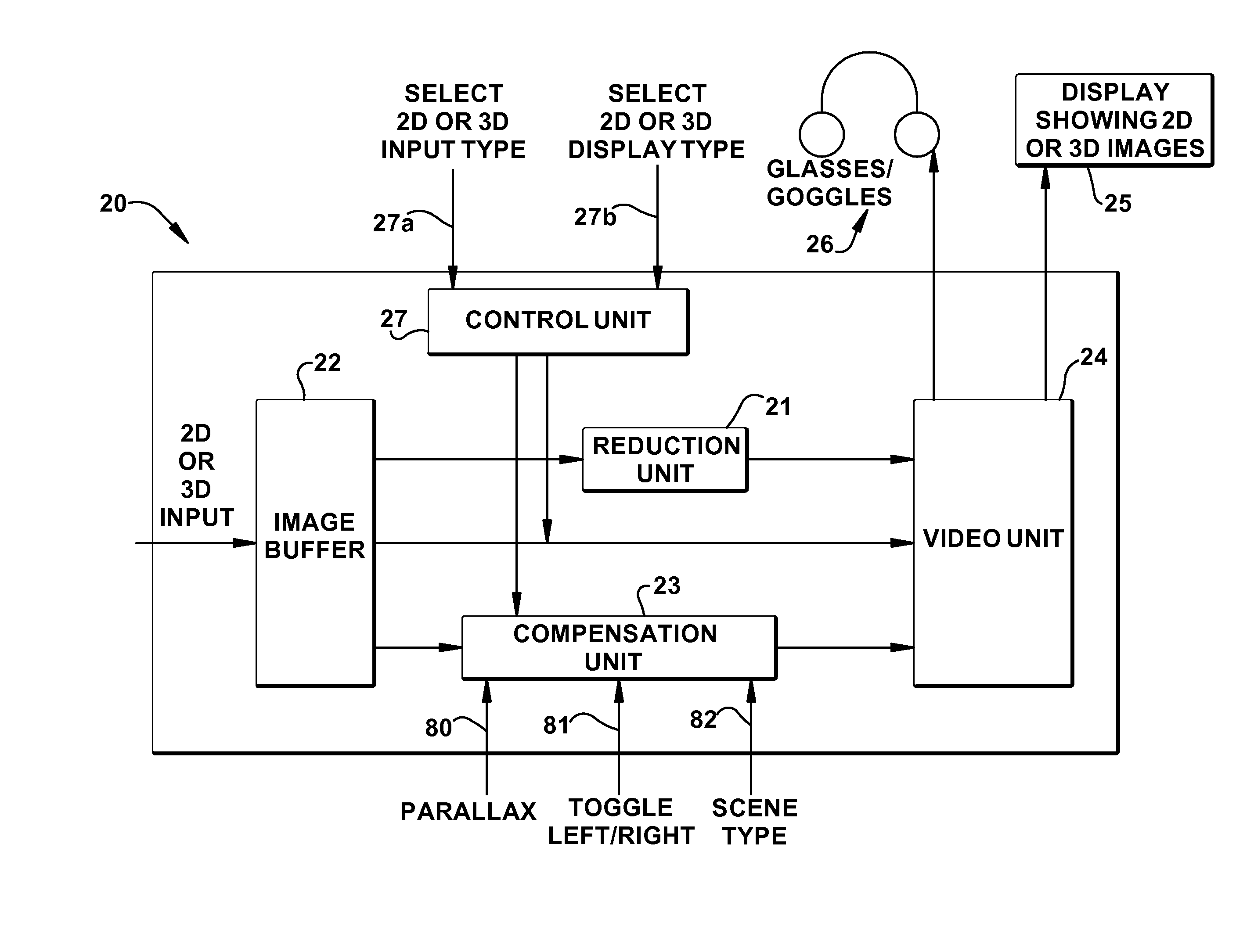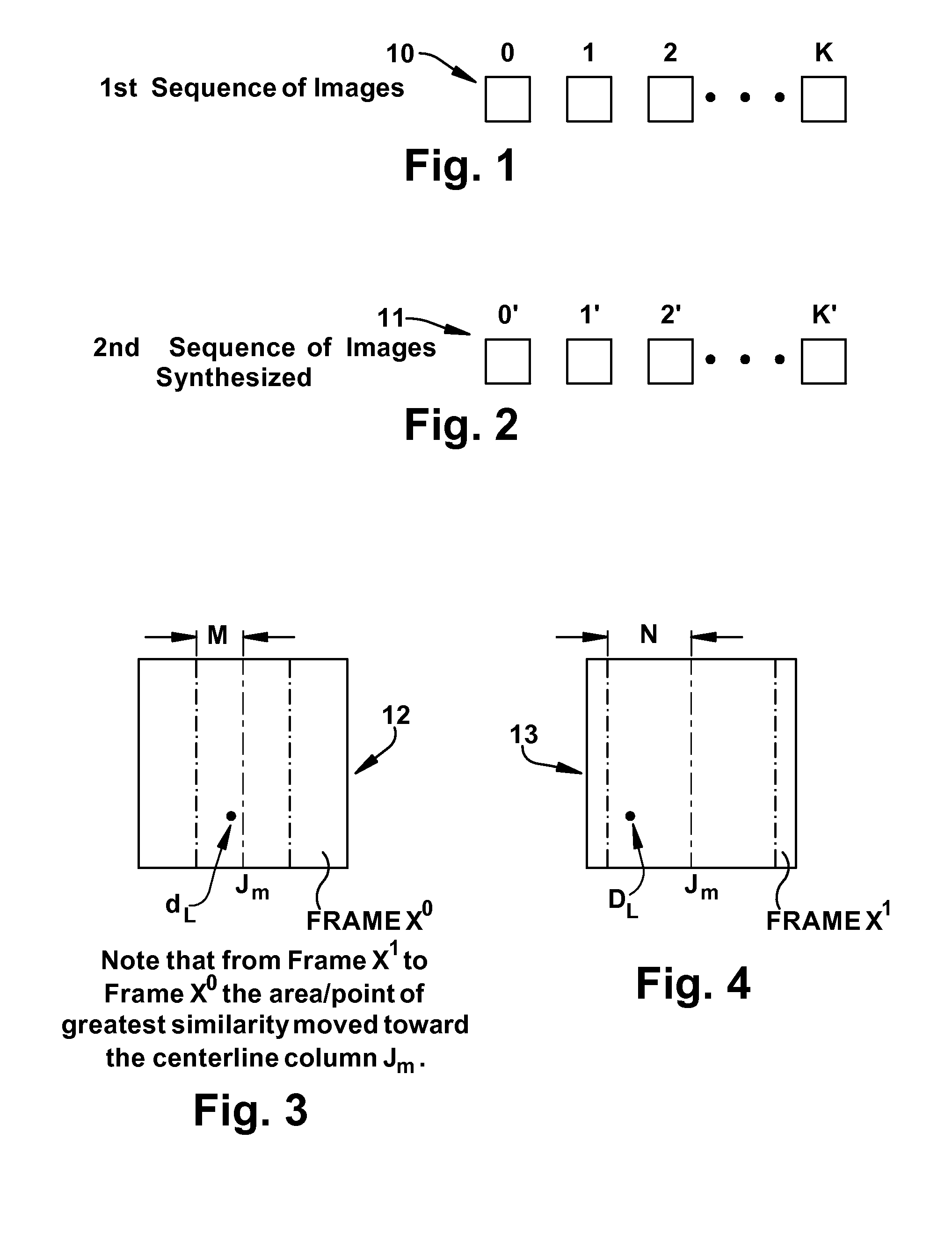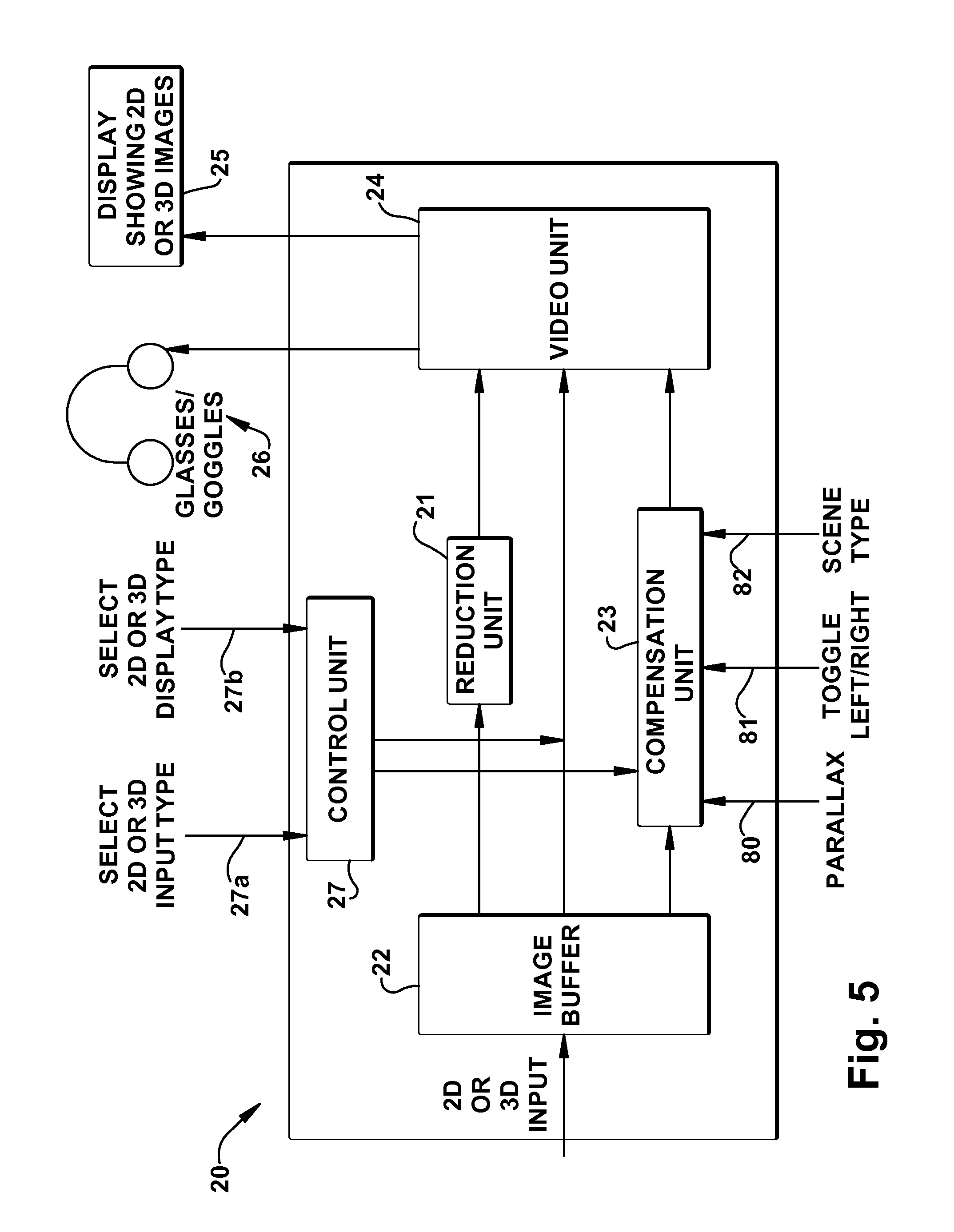Methods and systems for 2d/3d image conversion and optimization
a technology of applied in the field of methods and systems for 2d/3d image conversion and optimization, can solve the problems of reducing the refresh rate to twenty-five images per second, affecting the synchronization of both channels, and affecting the synchronization of the two channels, so as to reduce the value of the approximation variable.
- Summary
- Abstract
- Description
- Claims
- Application Information
AI Technical Summary
Benefits of technology
Problems solved by technology
Method used
Image
Examples
Embodiment Construction
Introduction
[0084] The present invention concerns improvements for converting 2D format movies, videos, television programs, video games, etc. to 3D (three-dimensional or stereo) format to obtain a 3D effect when observed by a viewer. The invention also concerns converting 3D format movies, videos, television programs, video games, and the like to 2D format.
[0085] An example of an approach for converting 2D format movies to 3D format is schematically illustrated in FIGS. 1 and 2 and also is described in greater detail further below in this specification at the section entitled 2D TO 3D CONVERSION USING APPROXIMATION VARIABLE α and in the German patent application and two PCT patent applications identified at the very beginning of this patent application.
[0086] Briefly, as is illustrated in FIGS. 1 and 2, there is shown at 10 a first sequence of k images 0, 1, 2, 3 . . . K. The 0th image is the one currently being shown / displayed or is ready to be shown / displayed—sometimes referre...
PUM
 Login to View More
Login to View More Abstract
Description
Claims
Application Information
 Login to View More
Login to View More - R&D
- Intellectual Property
- Life Sciences
- Materials
- Tech Scout
- Unparalleled Data Quality
- Higher Quality Content
- 60% Fewer Hallucinations
Browse by: Latest US Patents, China's latest patents, Technical Efficacy Thesaurus, Application Domain, Technology Topic, Popular Technical Reports.
© 2025 PatSnap. All rights reserved.Legal|Privacy policy|Modern Slavery Act Transparency Statement|Sitemap|About US| Contact US: help@patsnap.com



